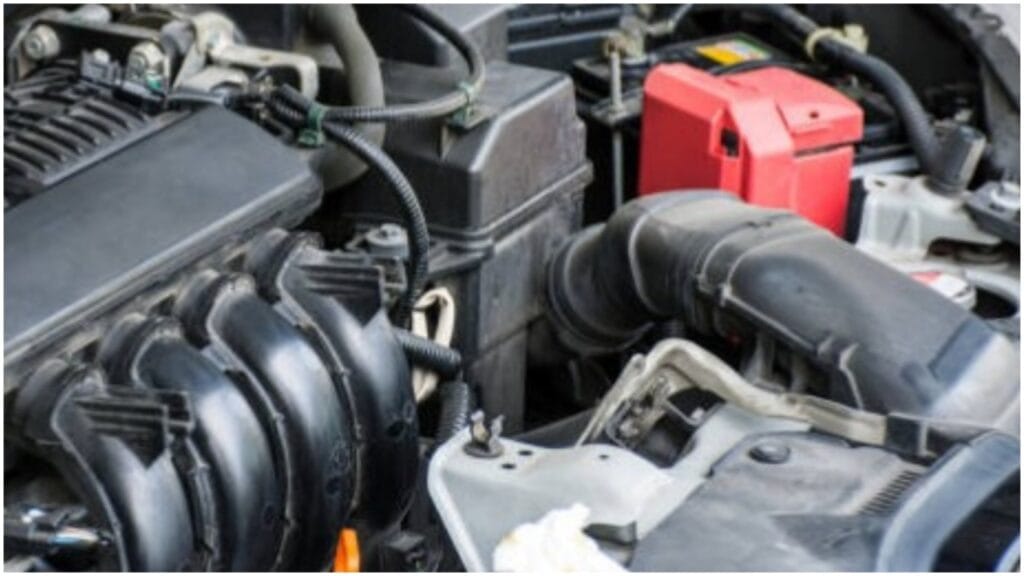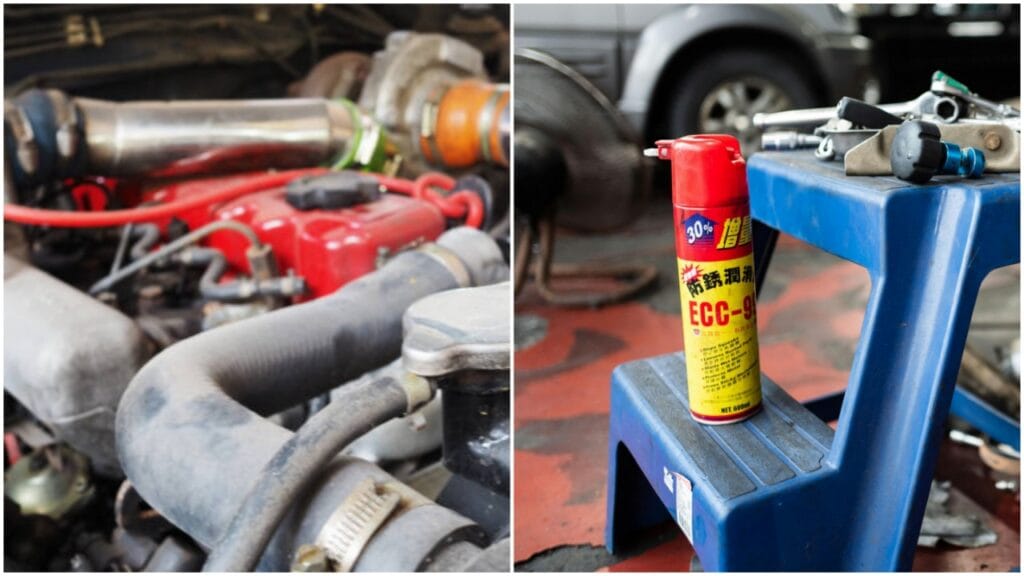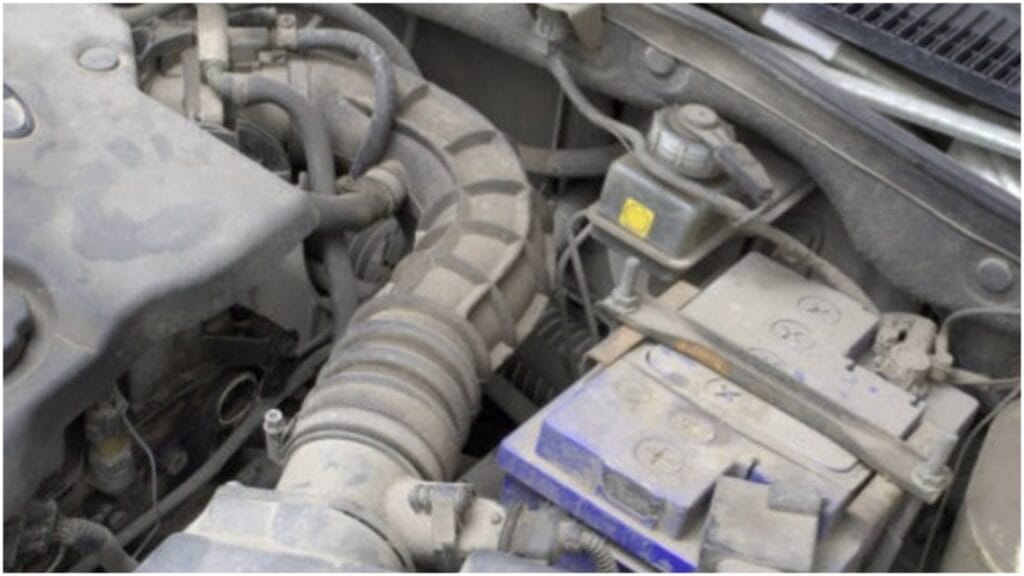To check for vacuum leaks, you can use a can of carburetor cleaner or brake cleaner. These sprays are easy to find at auto parts stores. They’re flammable, so use caution, but they work well for this job. Start your car and let it idle. Then, spray the cleaner around suspected areas of the vacuum system.
If there’s a leak, the engine’s idle speed will change when the cleaner gets sucked in. It might rev up or stumble, giving you a clear clue. Make sure to spray lightly and move methodically. Don’t drench the engine; mist the areas.
Listen closely for changes and watch for any visible signs, like bubbles forming. Always work in a well-ventilated area and avoid spraying near hot surfaces or open flames. You must repair or replace the damaged part if you find a leak. More details are below; if you want, read the following for more information.
What Is a Vacuum Leak Anyway?
A vacuum leak occurs when air enters the engine’s intake system, bypassing the standard air filters or throttle control. The cause could be a small crack in a hose, a faulty gasket, or even a loose connection.
Because the air isn’t being measured, the engine runs “lean”—getting too much air for the amount of fuel injected. This can mess with your engine’s performance and even trigger warning lights on your dashboard.
How Do You Find a Vacuum Leak?

It’s not always obvious. A vacuum leak often doesn’t give you a “red flag” symptom like a flat tire or a smoking exhaust. It might appear as poor acceleration, a rough idle, or even a check engine light.
You have to find it here. The trick is to see where the air is sneaking in—and there’s an easy way to do that: spray.
The Power of Sprays in Diagnosing Leaks
You’ve probably heard people talk about using a spray to identify vacuum leaks, and there’s a reason this method is so popular. It’s cheap, effective, and doesn’t require many tools.
The idea is simple: spray something around the vacuum lines and see if the engine’s behavior changes.
What Can I Spray?
Let’s discuss the sprays you can use to find those sneaky leaks. The most common and trusted options are:
Carburetor Cleaner or Brake Cleaner
These are the classic spraying choices. They’re flammable and evaporate quickly, making them safe for engine use.
Spray them along the vacuum lines while the engine is running. When the spray hits a vacuum leak, the engine will usually sputter or change its idle speed for a second.
Starter Fluid
Another option is starter fluid, which is a little more aggressive but works well in certain situations.
Like carburetor cleaner, starter fluid is flammable. When it encounters a vacuum leak, it can cause noticeable changes in engine performance. If you use a starter fluid, be extra careful to avoid starting any unwanted fires.
Water or Soap Solution
Some people use a more non-toxic, non-flammable approach: a simple soap and water mix sprayed onto the vacuum hoses and connections.
If you see bubbles forming, you’ve likely found a leak. While it’s not as dramatic or quick as using carburetor cleaner, it’s safer, especially for DIYers who may not be comfortable with flammable materials.
Specialized Leak Detector Spray
Sprays are designed to find vacuum leaks if you want something made for the job. They can often be purchased from auto parts stores and are generally safe to use on a car’s engine.
The bonus here is that these sprays are made to show up as a more visible change when they hit a leak.
How Do You Apply the Spray?

It’s not as simple as just spraying everything you see. The key here is to be systematic and careful:
- Start the engine and let it warm up. A cold engine might give you false readings because the idle could be different than when the engine is thoroughly heated.
- Locate the vacuum lines. These rubber hoses carry air from the engine’s intake manifold to various components like the brake booster, fuel pressure regulator, and PCV valve.
- Spray the cleaner or fluid around the hoses and connections, one section at a time. Be careful not to flood the area. It only takes a small amount to see a noticeable change.
- Watch for any changes in the engine’s behavior. If the RPMs fluctuate, or you hear a slight change in the engine’s noise or idle speed, you’ve found a leak.
Is It Really That Simple?
Yes and no. The spray method works great for finding apparent leaks, but it’s not foolproof. Some leaks are tiny or in hard-to-reach spots. Using the spray doesn’t necessarily fix the leak—it just points you in the right direction.
Once you’ve identified the problem area, you’ll need to fix it, whether replacing a hose, tightening a connection, or swapping out a faulty gasket.
Vacuum Leak Repair Cost

Now, the million-dollar question: How much will this cost me? The cost of fixing a vacuum leak varies depending on the severity of the leak and where it’s located. Here’s a rough breakdown:
DIY Fix
If you find the leak yourself, like a cracked hose or a loose connection, you can fix it for less than $20.
Replacement clamps are usually inexpensive, and you can do the job yourself without hassle. This is your cheapest option if you’re handy with a wrench and a screwdriver.
Mechanic Repairs
If you’d prefer to leave the work to the professionals, the labor will cost you. Mechanic labor rates can range widely depending on where you live, but you can expect to pay anywhere from $75 to $150 per hour.
In addition to labor, you’ll need to pay for any parts that need replacing. In some cases, vacuum leaks are located in hard-to-reach places, and fixing them could take longer, bumping up the cost.
Specialty Repairs
The cost can rise significantly if the leak is related to a more complex component, such as the intake manifold or PCV valve.
Replacing intake manifolds or gaskets can cost between $300 and $600, including parts and labor.
Getting some estimates before committing to a repair is always a good idea.
Preventing Future Leaks
Once your vacuum leak is repaired, you might wonder how to prevent it from happening again. Regular maintenance is key.
Check your hoses periodically for cracks, splits, or signs of wear. Also, keep your engine bay clean and clear of debris. A clean engine is less likely to have undetected leaks.
FAQ’s
How to check for vacuum leaks with soapy water?
One of the simplest and safest methods for checking for vacuum leaks is soapy water. Mix a small amount of dish soap with water in a spray bottle. Shake it until the soap dissolves completely.
With the engine running, spray the vacuum line where you suspect a leak. Focus on joints, connections, and places where rubber meets metal or plastic.
If there’s a leak, the soap will bubble up at the point of the breach. This happens because air is escaping through the crack or hole, causing the soap solution to foam.
The bigger the leak, the larger the bubbles will be. It’s a simple process, and the best part is that it’s non-toxic and non-flammable, so it’s safer than using brake cleaner or starter fluid.
The trick is to be thorough. Could you not rush through it? Check around each feeding, spraying slowly and carefully. Also, keep an eye on how the engine is running.
If you see bubbles and notice the idle changing or the engine sputtering, that’s a good sign you’ve found your leak.
How to check for vacuum leaks with WD40?
Start the engine and let it idle to check for vacuum leaks with WD-40. Ensure the engine is warm to get accurate results.
Then, spray a can of WD-40 around areas where vacuum leaks are most likely to occur, such as hoses, gaskets, intake manifolds, and around the throttle body.
Focus on places where the hoses connect to other components, as these are common leak points. As you spray, listen carefully for changes in the engine’s idle speed.
If the engine’s idle increases or fluctuates when the WD-40 comes into contact with a leak, it indicates that you’ve found the problem area.
The WD-40 temporarily seals the leak, causing the engine to rev slightly, which makes the leak more noticeable.
Be methodical, spray a small amount in a few areas at a time, and observe any noticeable changes.
It’s important to work quickly but carefully to avoid introducing too much WD-40 into the intake, which could cause misfires. Once you’ve located the leak, inspect the affected area closely for damage.
Chevy transmission vacuum leak symptoms?
A vacuum leak in a Chevy transmission can cause several noticeable symptoms. One common sign is erratic or delayed shifting.
The transmission may shift too late or too early, or it may have difficulty shifting smoothly between gears. You might also notice that the vehicle hesitates or feels sluggish when accelerating.
A vacuum leak can cause these issues by interfering with the transmission’s ability to properly control shift timing and pressure.
Another symptom is poor engine performance, such as rough idling or stalling, since the engine may not get the correct air-fuel mixture due to the vacuum leak.
If the vacuum leak is severe, the transmission may slip, causing the engine to rev without the vehicle accelerating correctly.
The check engine light may sometimes indicate a transmission or engine problem. You may also hear unusual noises, such as whining or hissing sounds, coming from the transmission area.
If you notice any of these symptoms, it’s essential to inspect the vacuum lines and connections for leaks. A quick fix or repair may prevent further damage to the transmission and restore proper function.
Symptoms of low engine vacuum?
A low engine vacuum can cause several noticeable symptoms affecting engine performance. One of the most common signs is rough idling or engine misfires.
If the vacuum is low, the engine may struggle to maintain a steady idle and shake or vibrate. Another symptom is poor acceleration.
When you press the gas pedal, the engine might hesitate or feel sluggish because it is not getting the necessary air-fuel mixture.
You may experience increased fuel consumption. When there’s a low vacuum, the engine compensates by using more fuel, leading to lower fuel efficiency.
A check engine light may indicate a problem with the vacuum system or related components.
Another sign is hard starting, where the engine struggles to turn over or takes longer to start than usual.
You may notice a high or fluctuating idle speed, as a low vacuum can affect the idle control system. Finally, you might hear unusual sounds, such as hissing, indicating a vacuum leak.
Conclusion
Finding a vacuum leak doesn’t have to be a huge hassle. With a can of spray and a little know-how, you can track the issue without breaking the bank.
And if you need to pay a mechanic to fix it, it won’t usually be as expensive as some other repairs, whether you’re a seasoned DIYer or just trying to keep your car running smoothly.

